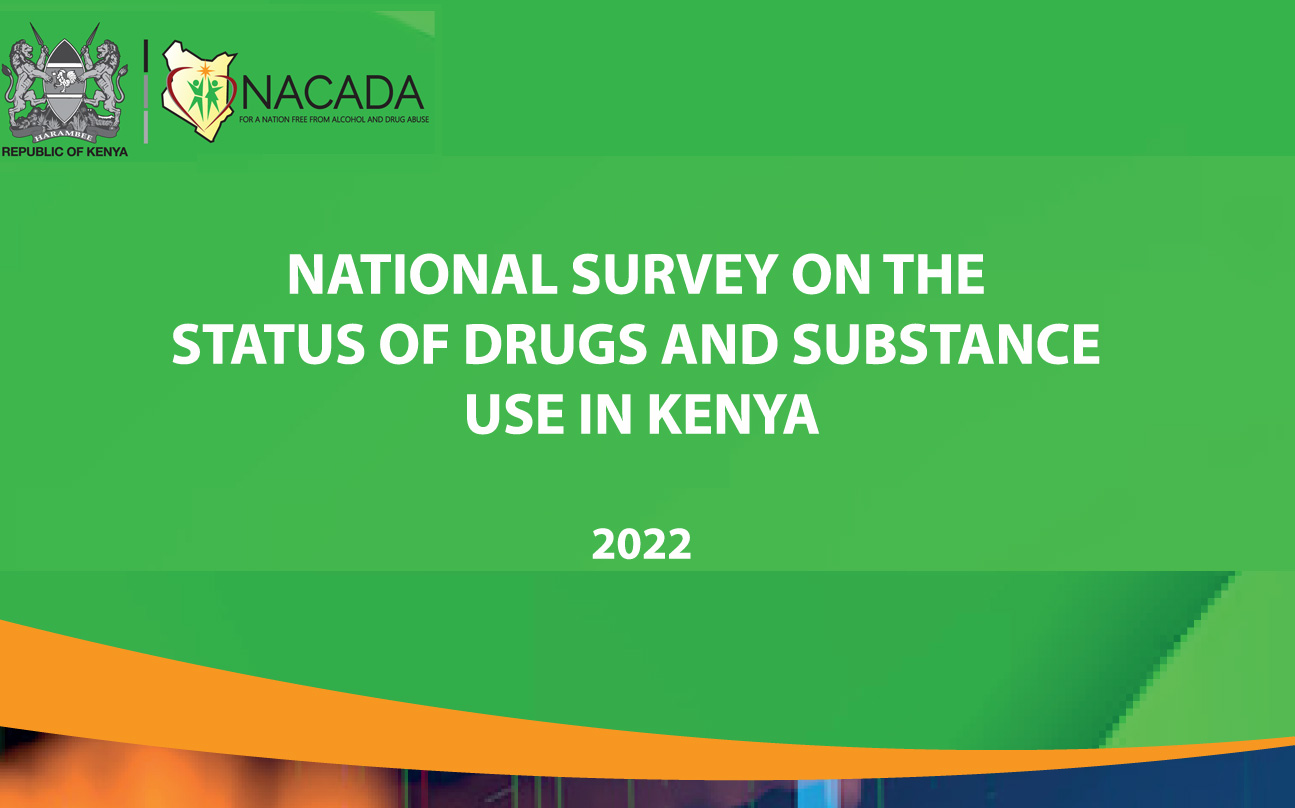Assessing the National Status of Drugs and Substance Abuse in Kenya 2022: Insights, Challenges, and Future Directions
By Abigael Wanjiku
The issue of drugs and substance abuse has emerged as a significant public health concern in Kenya. To tackle this pervasive problem, the Government of Kenya conducted the National Survey on the Status of Drugs and Substance Abuse in 2022. This comprehensive survey aimed to assess the prevalence, patterns, and associated factors of alcohol and drug abuse across the country.
In this article, we delve into the key findings, and challenges encountered, and explore potential strategies for combating drug abuse in Kenya based on the survey's results.
Prevalence of Drug Abuse: The survey highlighted an alarming increase in the prevalence of drug abuse among both youth and adults. Substance abuse was found to be higher in urban areas compared to rural regions. The most commonly abused substances included alcohol, tobacco, marijuana, and khat (miraa). Additionally, there was an upsurge in the misuse of prescription drugs.
Vulnerable Populations: The survey identified certain populations that were particularly vulnerable to drug abuse. These included marginalized communities, unemployed individuals, and those with low educational attainment. Furthermore, young people between the ages of 15 and 29 were identified as a high-risk group for substance abuse.
Social and Economic Consequences: Drug abuse was found to have severe socio-economic consequences. It negatively impacted individuals' mental and physical health, strained relationships, and hampered educational and employment opportunities. Additionally, substance abuse was associated with an increase in crime rates and the burden on the healthcare system.
Challenges Encountered
- Stigma and Lack of Awareness: The survey highlighted the persistence of stigma surrounding drug abuse, which hindered individuals from seeking help. Many people lacked awareness about the available treatment and rehabilitation services, leading to a significant treatment gap.
- Inadequate Resources: The survey shed light on the inadequate allocation of resources for drug prevention, treatment, and rehabilitation programs. Insufficient funding and limited infrastructure posed major challenges in providing effective interventions and support to those in need.
- Changing Trends: The survey revealed the emergence of new substances and changing patterns of drug abuse, making it difficult for policies and programs to keep up with the evolving landscape. The rise of synthetic drugs and online drug markets posed new challenges for law enforcement agencies and public health authorities.
Future Directions
- Enhanced Public Education: A key focus should be on raising awareness about the risks and consequences of drug abuse through comprehensive public education campaigns. This includes targeted programs for schools, communities, and media platforms to address the stigma surrounding addiction and promote early intervention.
- Strengthened Prevention Efforts: Effective prevention strategies, such as life skills training, peer support programs, and community-based initiatives, should be developed and implemented. Empowering vulnerable populations and promoting positive youth development can play a crucial role in preventing drug abuse.
- Improved Treatment and Rehabilitation Services: There is a need to expand access to quality treatment and rehabilitation services, including outpatient and inpatient care, counseling, and support groups. Ensuring an integrated approach to care, with collaboration between healthcare providers, social services, and community organizations, is vital.
- Policy and Legislative Reforms: The findings of the survey should inform evidence-based policy and legislative reforms to address the evolving drug abuse landscape. This includes updating drug control laws, regulating new substances, and strengthening law enforcement efforts to combat drug trafficking.
In conclusion, by leveraging on the data and recommendations therein Kenya can develop a more robust and effective approach to combating drug abuse. It is imperative for the government as well as civil society.

